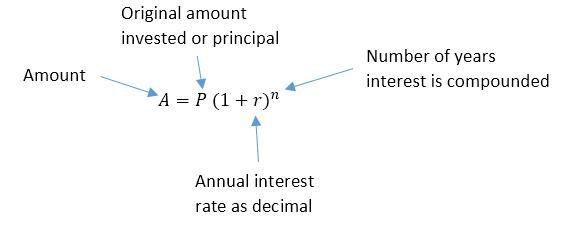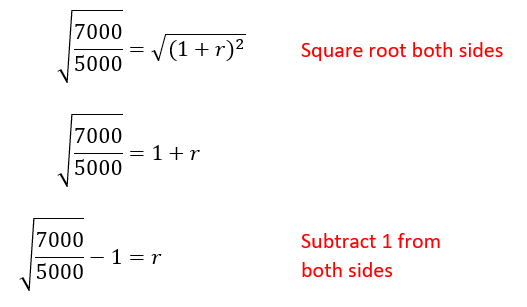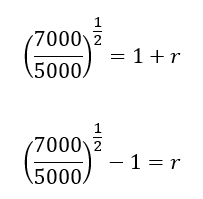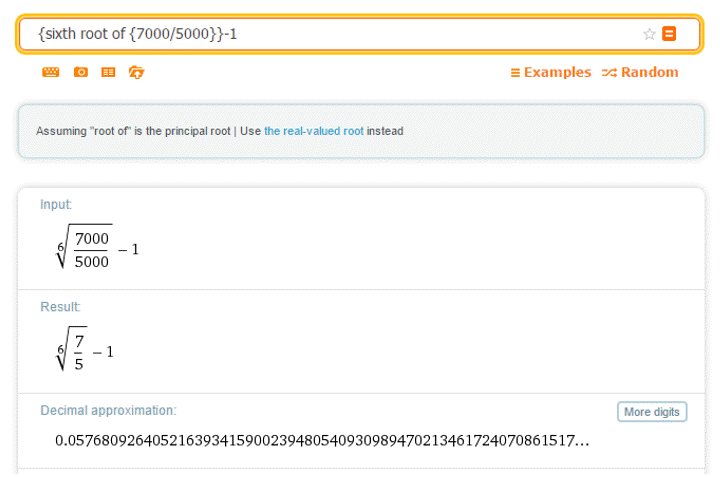Suppose 5000 dollars is deposited in an account that earns compound interest that is done annually. If there is 7000 dollars in the account after 2 years, what is the annual interest rate?
The easiest way to approach this problem is to use the compound interest formula,
This formula applies when interest is earned on an annual basis and the interest is earned once a year.
Let’s look at the quantities in the problem statement:
5000 dollars is deposited in an account > P = 5000
If there is 7000 dollars in the account after 2 years > A = 7000 and n = 2
Putting these values into the formula above gives us
We need to find the annual interest rate r. Since the r is hidden in the parentheses, we start by isolating the parentheses.
To get at the r, we need to remove the square on the parentheses.
Using a calculator to do the square root, we get r ≈ 0.183 or 18.3%.
Note that instead of taking the square root to get rid of the square, we could raise both sides to the 1/2 power:
Then we would be able to solve for r,
and get the same value for r since square rooting and raising to the 1.2 power yield the same result.
Now what if the interest is earned over six years instead of two years? Instead of a square on the parentheses we now have a sixth power. To solve for r in this equation, we follow similar steps as before.
The root can be computed in a graphing calculator using the MATH button, by raising to the 1/6 power (^(1/6)), or put into WolframAlpha:
Either method gives r ≈ 0.577 or 5.77%. Notice that the annual interest is lower when it is earned over a longer period of time.







